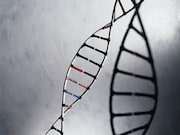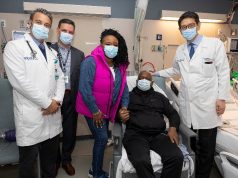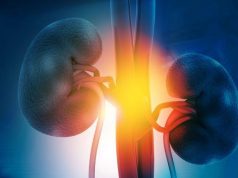Average donor-derived cell-free DNA in highest tertile linked to increased risk for allograft failure
THURSDAY, Jan. 24, 2019 (HealthDay News) — Donor-derived cell-free DNA (ddcfDNA) is a potential biomarker that can predict allograft failure after lung transplantation, according to a study published online Jan. 23 in EBioMedicine.
Sean Agbor-Enoh, M.D., Ph.D., from the Genomic Research Alliance for Transplantation in Bethesda, Maryland, and colleagues used percent ddcfDNA as a sensitive marker of early graft injury to predict allograft failure in 106 patients who underwent lung transplantation. Participants were monitored for development of allograft failure. In the first three months after transplantation, plasma samples were collected and assayed for percent ddcfDNA. The average levels of percent ddcfDNA (avddDNA) were computed over three months, and the correlation with allograft failure was assessed.
The researchers found that the avddDNA was highly variable, with median values of 3.6, 1.6, and 0.7 percent for the upper, middle, and low tertiles, respectively. Participants with avddDNA in the upper tertile had a 6.6-fold higher risk for developing allograft failure compared with those in the low and middle tertiles; they also had lower peak forced expiratory volume in one-second values and more frequent percent ddcfDNA elevations that were not clinically detectable.
“In summary, from our proof-of-concept study, we propose avddDNA as a predictive marker for allograft failure and premature death,” the authors write. “To our knowledge, this is the first report of a method to detect and quantify clinically silent, but likely pathological, events preceding allograft failure.”
Copyright © 2019 HealthDay. All rights reserved.








